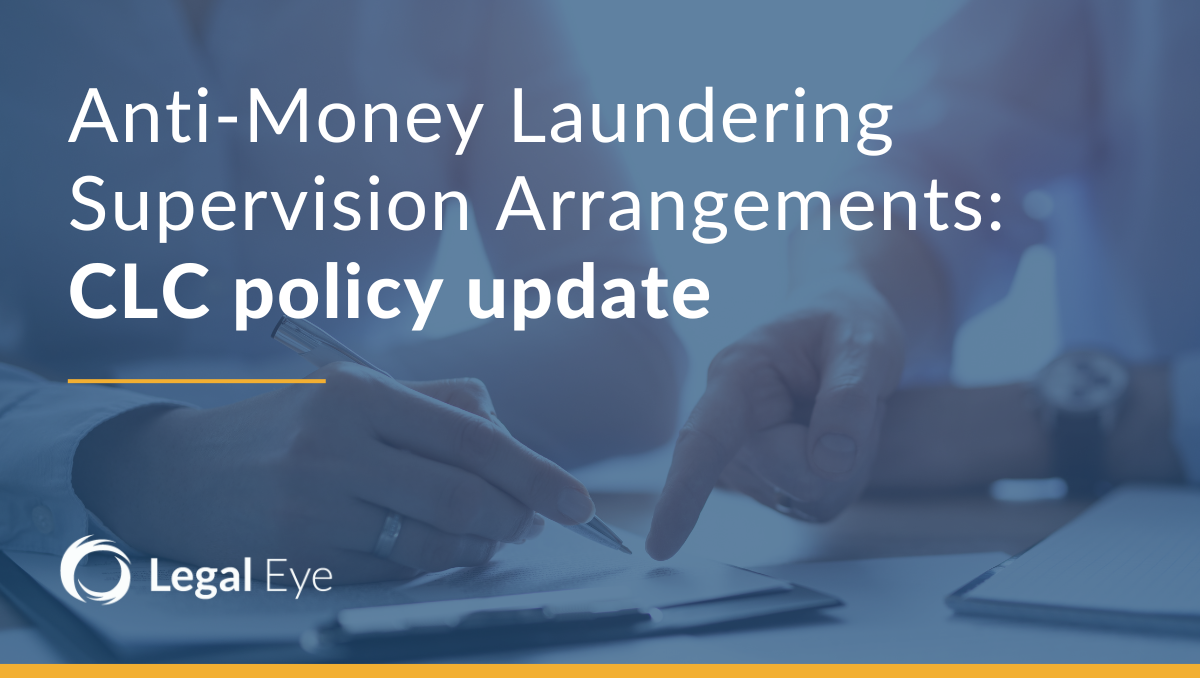Firstly, I want to say an incredible well done to everyone for getting through the…
In June 2017, The Money Laundering, Terrorist Financing and Transfer of Funds (Information on the Payer) Regulations came into effect. The Council for Licensed Conveyancers (CLC) is one of the bodies appointed to supervise compliance with these anti-money laundering laws.
A policy document outlines the CLC’s key governance arrangements, approach to supervision, and procedures for fulfilling its responsibilities under the Act.
Crucially, the document explains that the CLC takes a risk-based approach to AML supervision. To help it do this, it maintains a risk register, which includes a profile of each CLC regulated practice and sole practitioner. The register covers things like:
- The geographical location of clients
- The percentage of overseas and remote clients
- The method of client verification
- Specific risk areas
- Whether the practice is obtaining adequate source of funds evidence
- Whether the practice has an adequate firm wide risk assessment.
This information is gathered via onsite inspections, remote/desk-based reviews, intelligence received, complaints, and disciplinary investigations, with 20% – 30% of the CLC’s regulated community inspected each year.
The supervisor will work with firms to ensure they are compliant, and provide support where necessary to avoid severe punitive action. However, where “persistent non-compliance or actual consumer harm occurs”, the CLC will move to disciplinary tools.
The CLC’s enforcement tools include:
- Managed compliance. For example, creating an action plan or providing directions to address breaches and ensuring the individual or practice complies.
- Informal sancti For example, notice letters, informal reprimands, or agreeing an undertaking with the firm.
- Formal sancti For example, termination of licence, disqualification, conditions on licence, formal reprimand and/or financial sanction (after a full investigation).
This is not a comprehensive list.
How to ensure compliance with the CLC
To meet the CLC’s requirements and ensure your firm is compliant with the latest AML regulations requires thorough training and robust procedures. Here are key steps to take:
Carry out regular AML training
Ensure all staff, especially those involved in client onboarding and transactions, receive regular training on identifying and verifying sources of funds and wealth. This training should be updated annually to reflect any changes in regulations or risk indicators.
Develop clear AML policies
Create and maintain comprehensive AML policies and procedures, including for verifying source of funds and wealth. These should be easily accessible to all staff and form part of the onboarding process for new employees.
Use robust verification tools
Employ reliable digital tools and technologies for client verification. Digital ID tools can enhance accuracy and reduce the risk of fraud, ensuring that the verification process is both efficient and thorough.
Maintain detailed records
Keep meticulous records of all client verification processes. This ensures transparency and accountability, making it easier to demonstrate compliance during inspections or reviews.
Carry out regular audits and reviews
Conduct regular internal audits to ensure compliance with AML regulations. Regularly review and update your risk assessments and verification processes to stay aligned with current regulatory expectations.
Engage with risk and compliance experts
Expert outsourced training, guidance and audits can help your firm stay informed about best practices and aware of emerging risks – ensuring continuous compliance with CLC requirements.
Encourage a compliance culture
Ensure all staff understand the importance of AML regulations and their role in maintaining compliance. Encourage open communication and provide support for staff who identify potential risks or breaches.
By following these steps, your firm can effectively meet the CLC’s AML requirements, reduce the risk of non-compliance, and contribute to the wider effort to combat money laundering and financial crime in the property market.
Legal Eye offers a bespoke Source of Funds (SOF) and Source of Wealth (SOW) training course designed exclusively for risk and compliance professionals. This live and interactive one-hour online training session is tailored to meet the specific needs of your firm, ensuring your staff and fee earners are equipped with the knowledge and skills necessary to navigate complex compliance challenges. Find out more at bestpractice@legal-eye.co.uk or call 020 3051 204 today.



